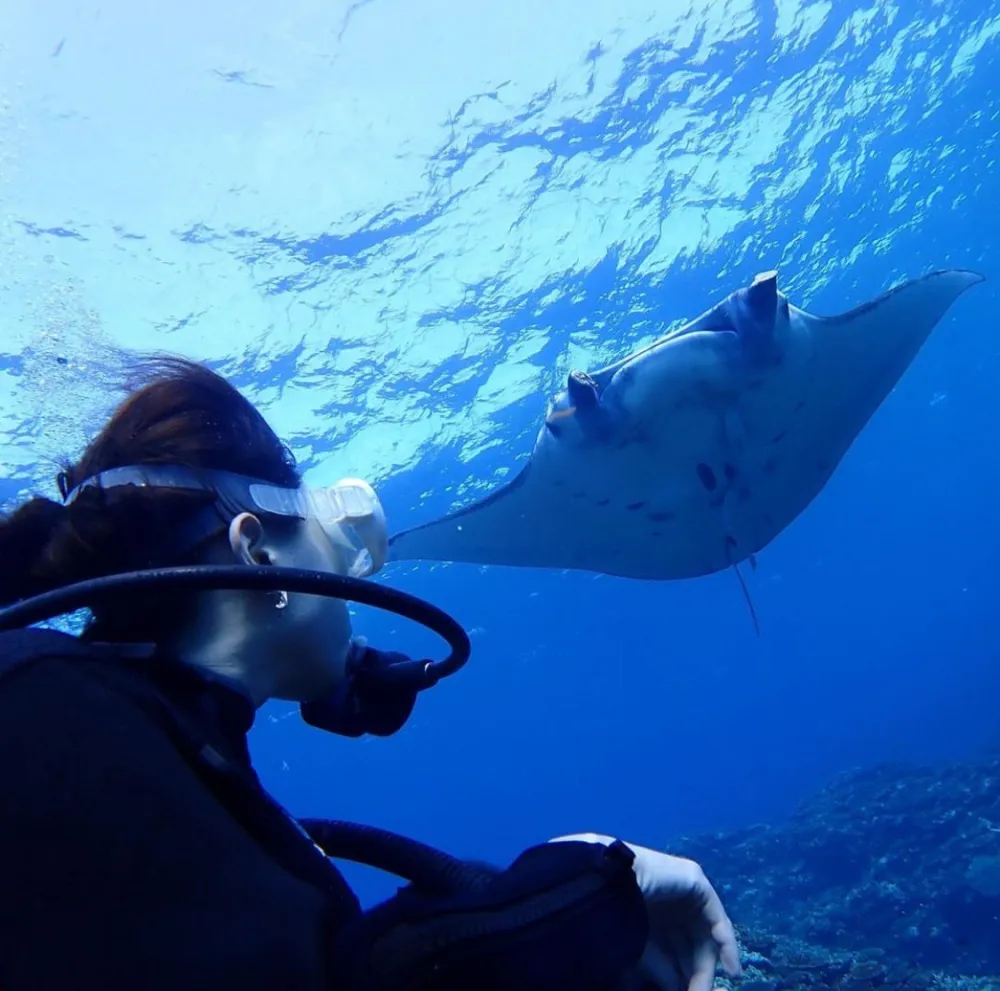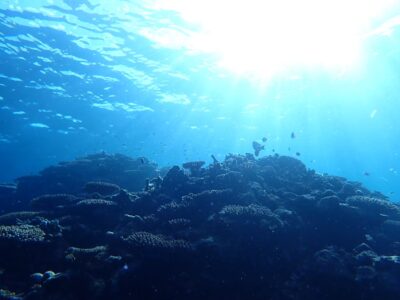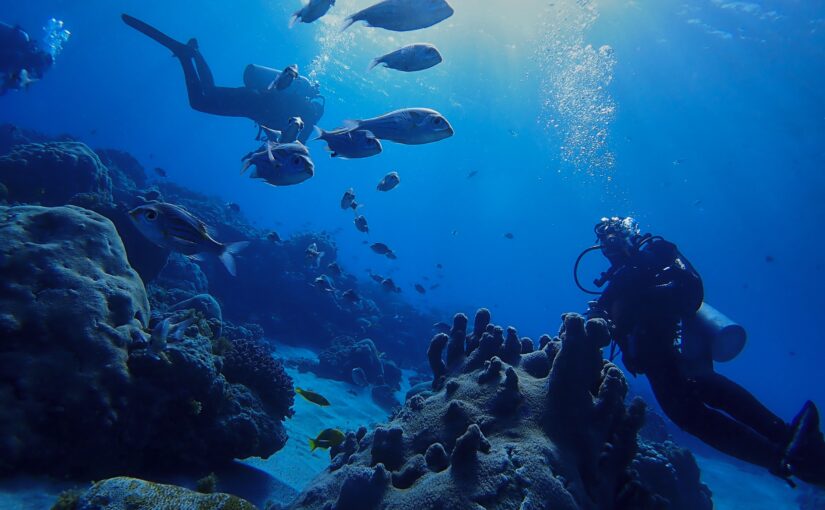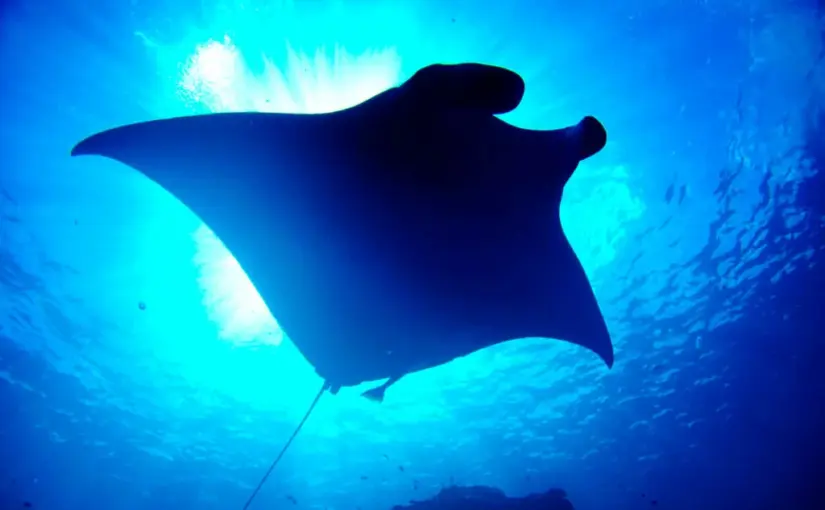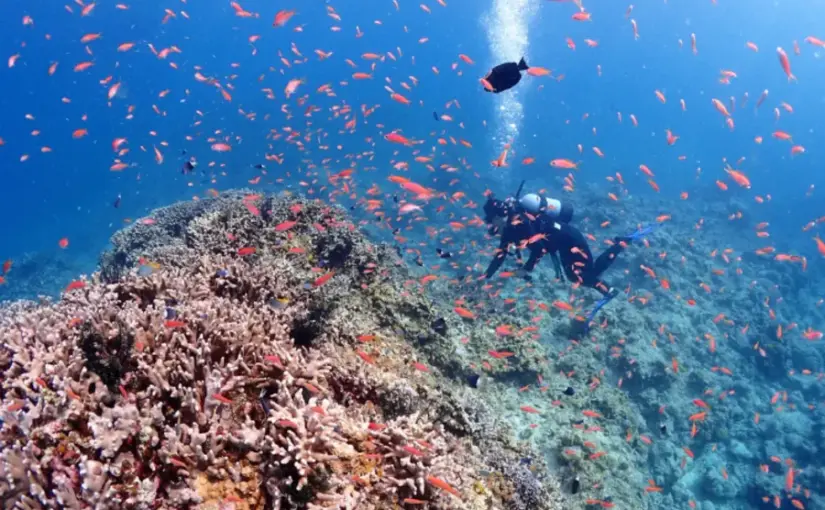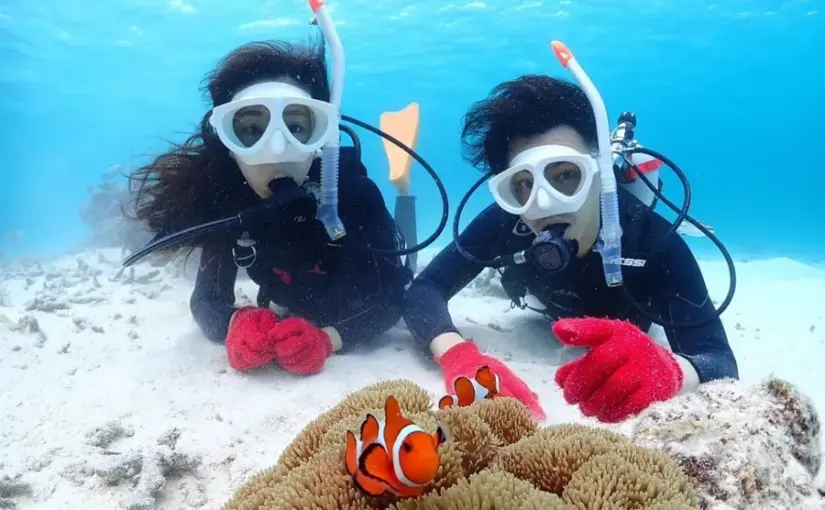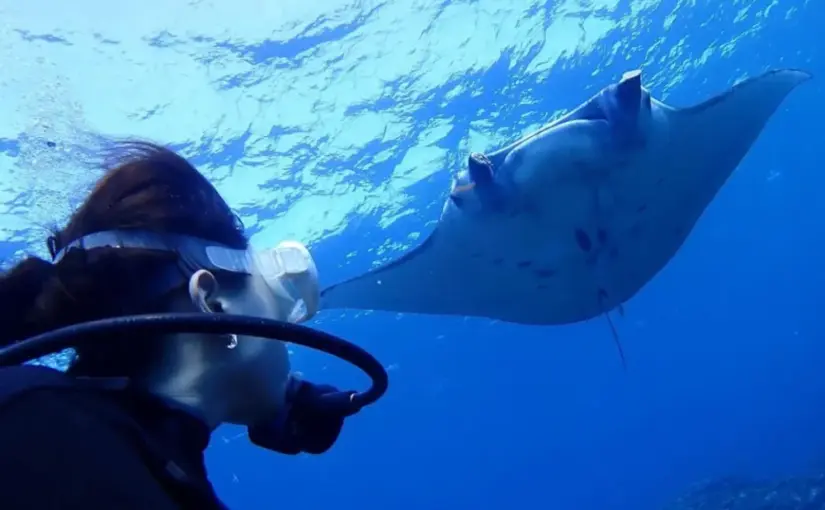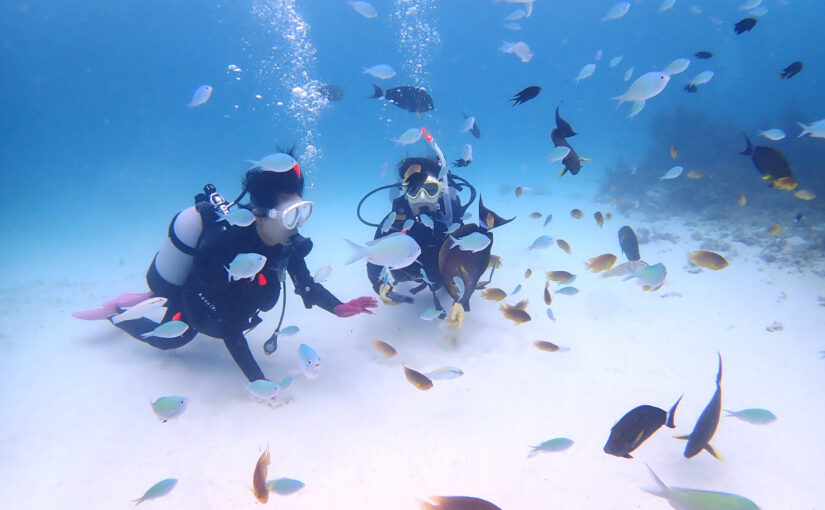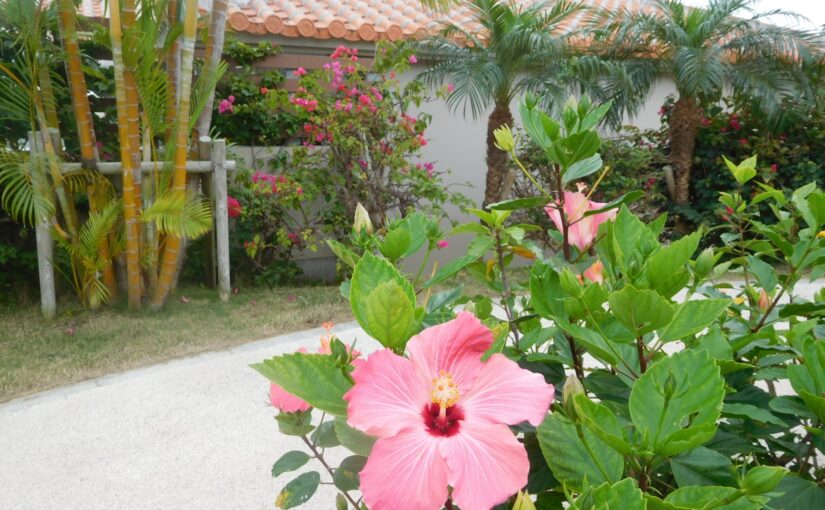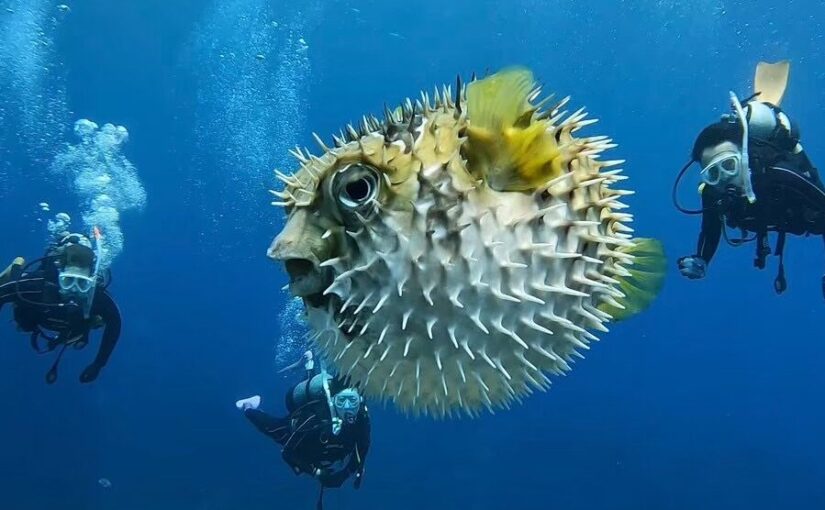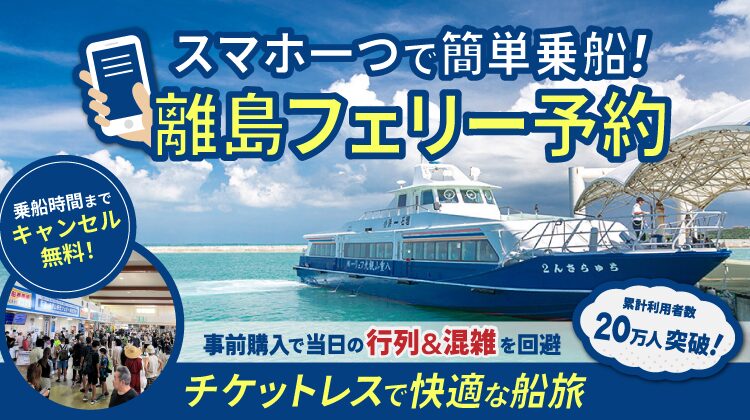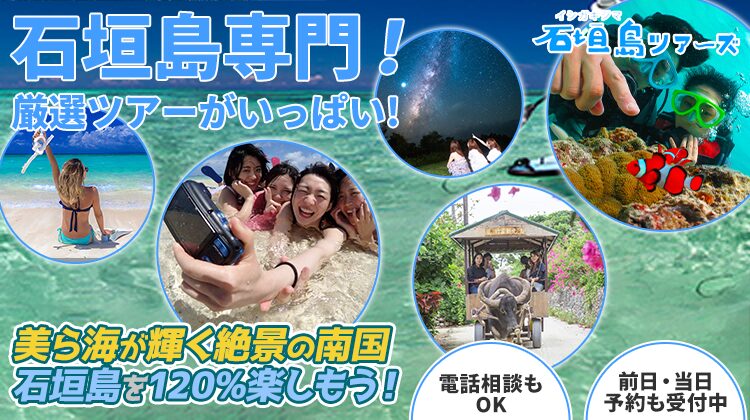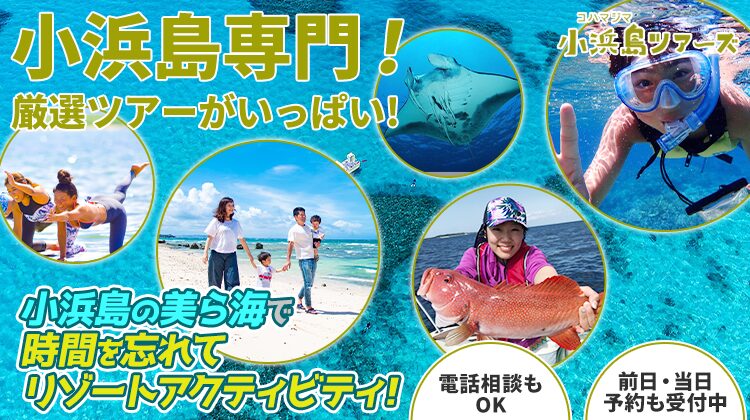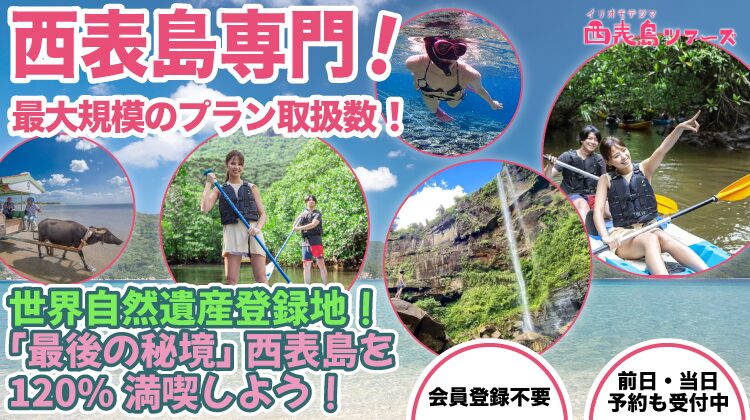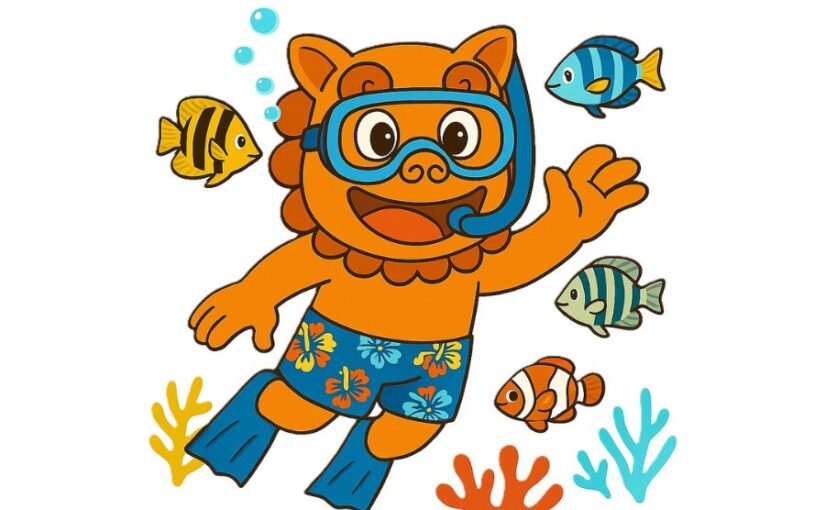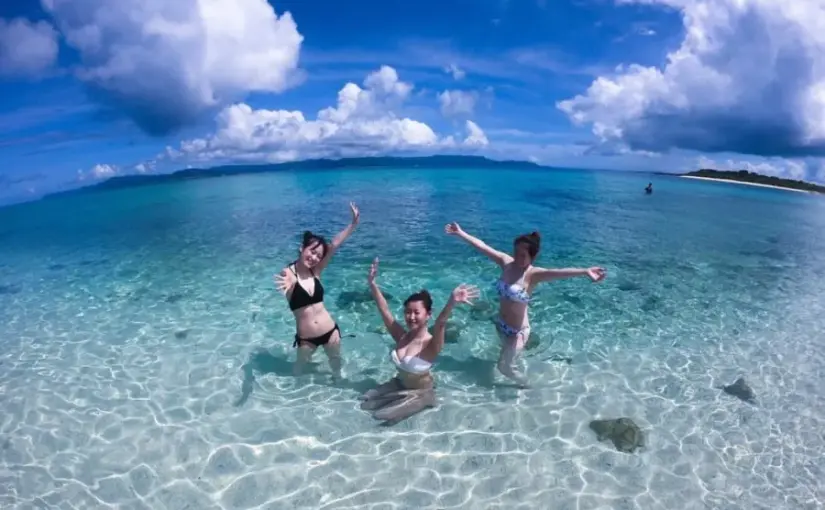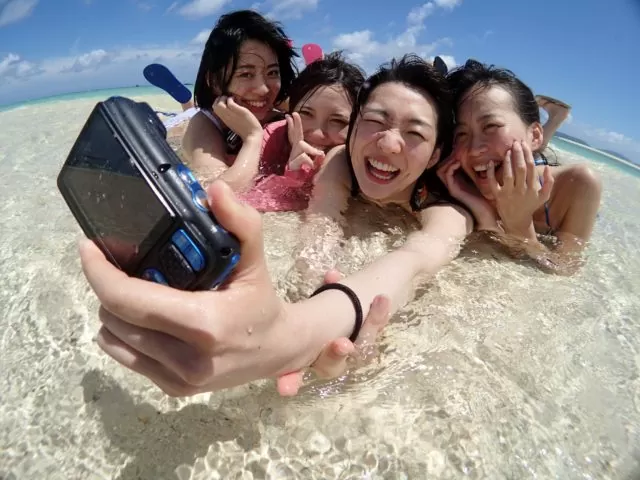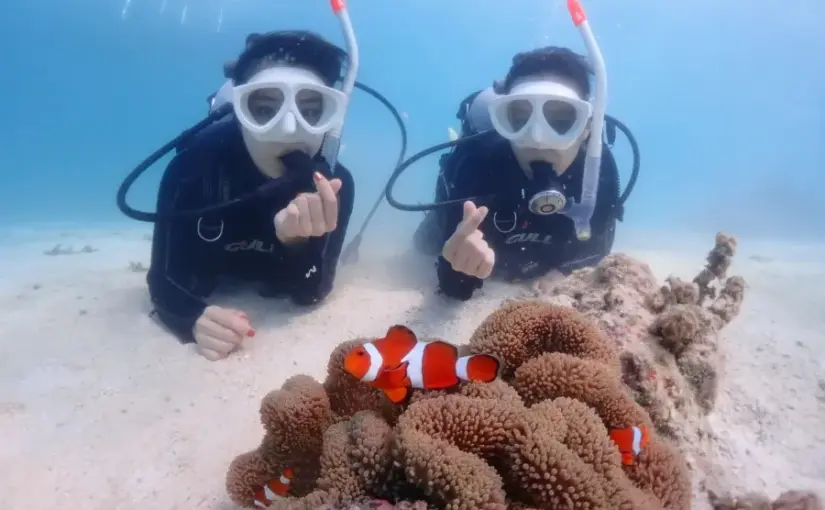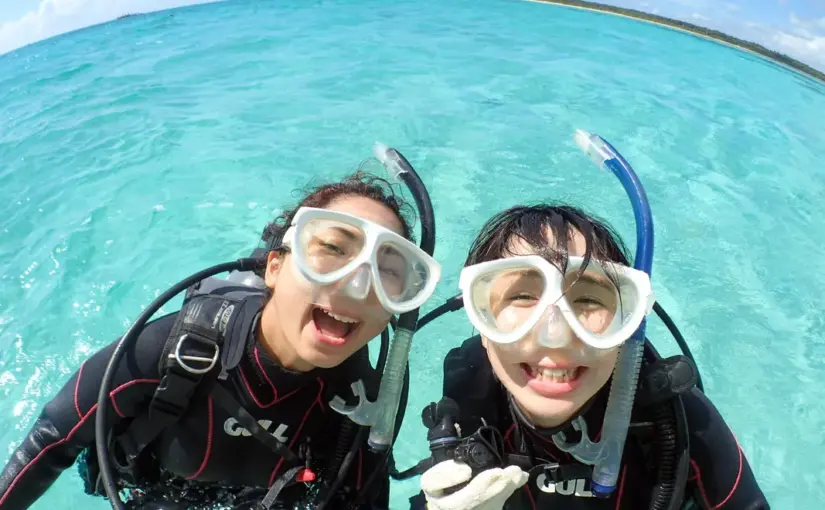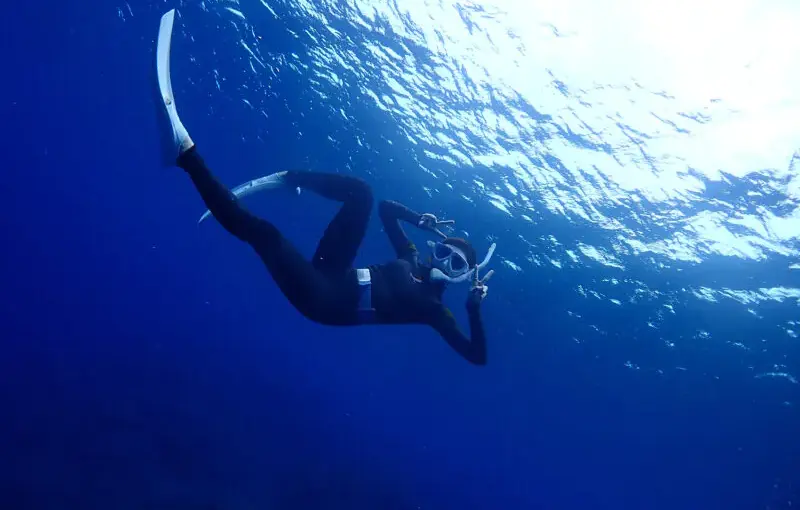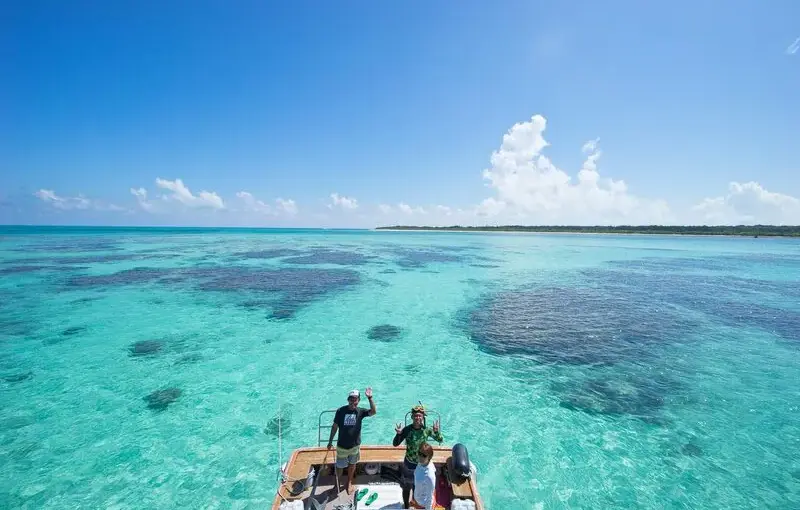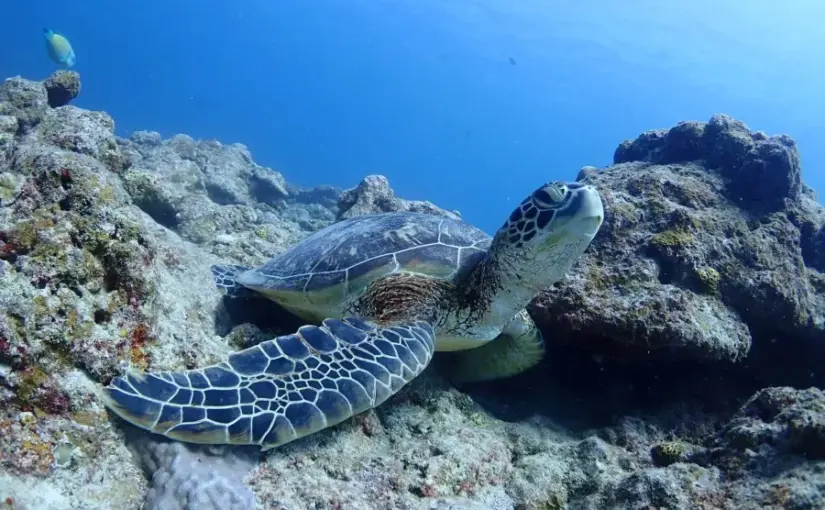Recommended for beginners! Manta Diving & Snorkeling Guide to Enjoy in Ishigaki Island
Table of Contents
Special Experience of Swimming with Manta Rays in Ishigaki Island
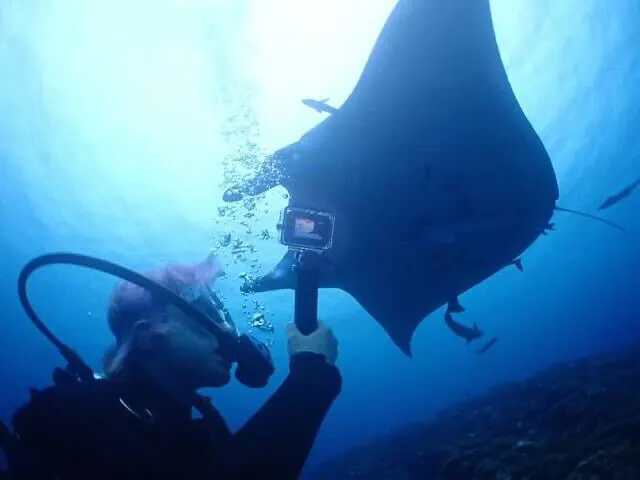
Manta rays, the queen of the sea, are coveted by many divers. Around Ishigaki Island,Spots with high encounter rates with manta raysThere are many, and they are attracting attention from all over the world.
In this issue, we will introduce manta ray spots in Ishigaki Island and recommended diving and snorkeling tours for beginners to see manta rays!
◆Ishigaki Island and want to see manta rays
◆If you want to know about manta ray tours in Ishigaki Island
◆Love diving and snorkeling
◆If you want to know information about manta spots in Ishigaki Island
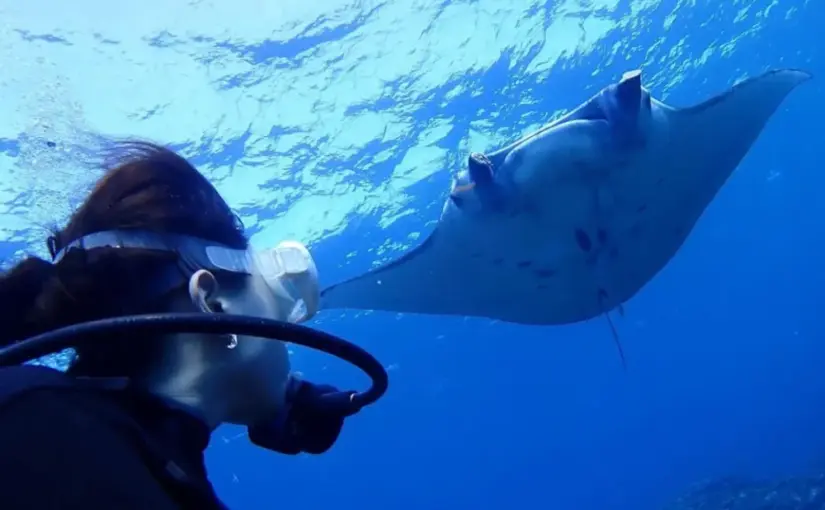 Ishigaki Island Manta Tour The probability of seeing manta rays is one of the highest in Japan! What is the charm of Ishigaki Island Manta Tour? Manta rays swim gracefully as if they are flying in the sky. The excitement of seeing the magnificent manta rays up close is beyond words! Ishigaki Island has one of the highest rates of manta ray encounters in Japan, and the diving and sightseeing [...]. (3 in total) アクティビティの詳細を見る
Ishigaki Island Manta Tour The probability of seeing manta rays is one of the highest in Japan! What is the charm of Ishigaki Island Manta Tour? Manta rays swim gracefully as if they are flying in the sky. The excitement of seeing the magnificent manta rays up close is beyond words! Ishigaki Island has one of the highest rates of manta ray encounters in Japan, and the diving and sightseeing [...]. (3 in total) アクティビティの詳細を見る
Characteristics of manta rays that can be seen in Yaeyama
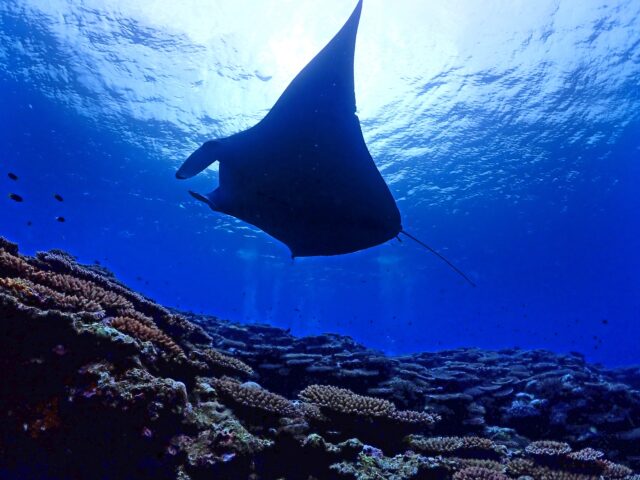
The manta ray has a "There are two types of manta rays, the "manta ray" and the "Nanyo manta ray," and the manta rays that can be seen in the sea of the Yaeyama Islands are called "manta rays.common sandeel (Actinidia arguta)".
It can reach a maximum of 5 meters and weigh about 3 tons, but it is smaller than the Japanese stingray. They live in coastal waters.
Why is it easy to see manta rays on Ishigaki Island?
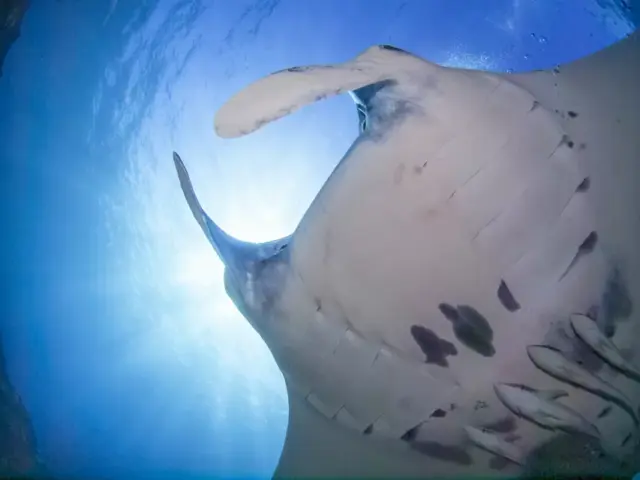
Manta rays are "Cleaning StationThey have a habit of coming to areas where "cleaner fish," as they are called, gather and have the little fish eat parasites and old skin to clean their bodies.
Ishigaki Island has many of these cleaning stations, and there are spots where manta rays gather in various locations.
In addition, plankton, which is food for manta rays, is abundant, and the warm temperatures make it easy for manta rays to be active.
You can see manta rays around Ishigaki Island.
What is the best season?
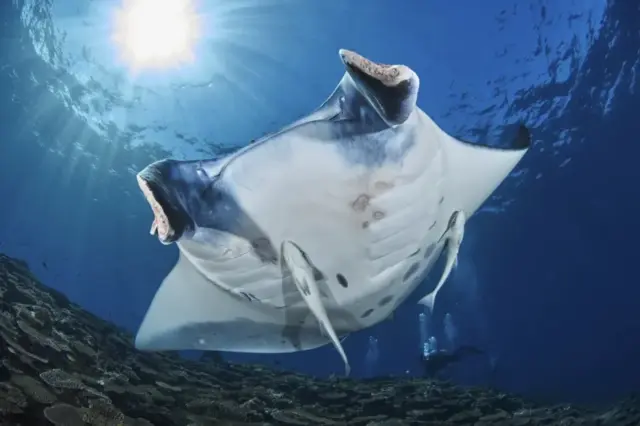
Manta rays are likely to be seen all year round, though,From the end of the rainy season to autumnThe best season is between
During this time of year, it is said that the seas are calm and clear, making it easy to see manta rays.
especiallyOctobercan be seen in the courtship behavior of manta rays and multiple manta rays can be seen swimming.
Manta points around Ishigaki Island
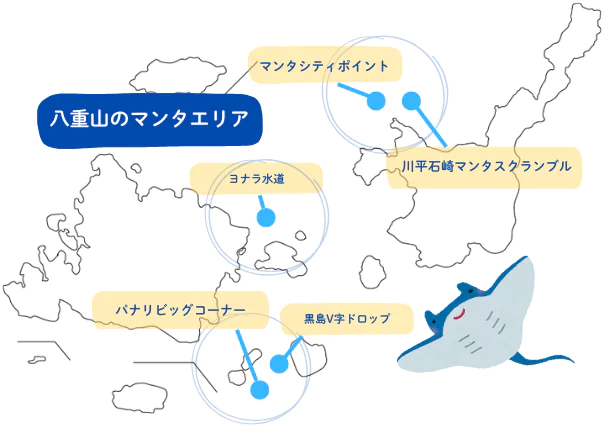
There are roughly three manta areas around Ishigaki Island.
Around Kabira Bay, a scenic spot on Ishigaki Island, around "Seisei Joko," the largest coral area in Japan, near Kuroshima Island, and between Kohama Island and Iriomote Island.
High probability of encounter!
See the list of Ishigaki Island Manta Tour
A staple of Ishigaki Island! Kabira-Ishizaki Manta Scramble
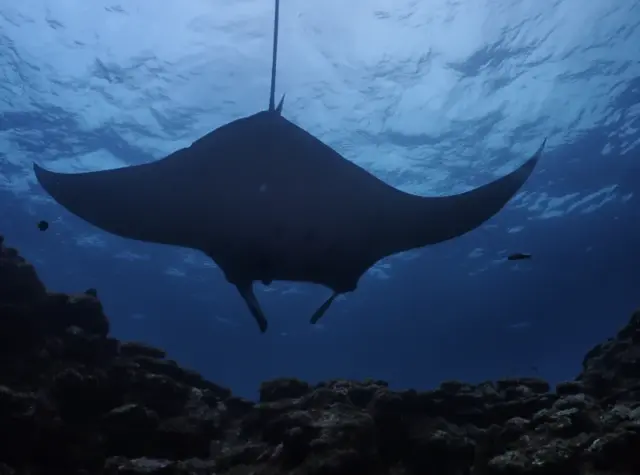
The Kabira Ishizaki Manta Scramble in the Kabira Bay area is,The most famous manta point in Ishigaki IslandIt is The depth is about 10 to 15 meters, making it relatively easy for beginners to try.
There are numerous cleaning stations and the encounter rate with manta rays is quite high.
Because of the tidal currents, join a guided tour to enjoy the area.
Average depth: 10-15 m
Flow: Gentle to moderate
Manta City Point (MCP)
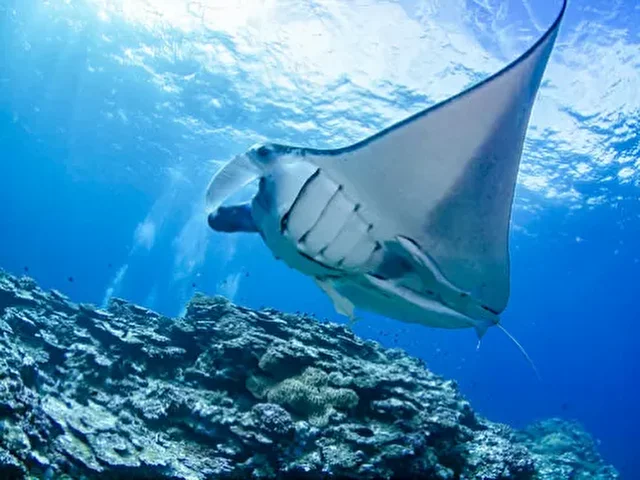
Manta City Point is also located around Kabira Bay and is a major point along with Manta Scramble.
This is a relatively new observation spot, with a depth of around 15 meters and gentle topography.
To protect manta rays and reduce crowdingLimited number of boats allowed to dockis established.
Average depth: 10-15 m
Current: Moderate, can be strong
Yonara Channel

Yonara Channel is a dive site between Iriomote Island and Kohama Island and is for advanced divers.
Strong tidal currents,drift diving(The dive is based on the current (diving while the current is flowing), but the encounter rate is very high. The depth is about 15 to 25 meters, and multiple manta rays can be seen dancing gracefully.
If you are a license holder or have experience, this is a spot you should visit at least once.
Average depth: 15-25m
Currents: Strong currents are likely to occur
Panari Big Corner
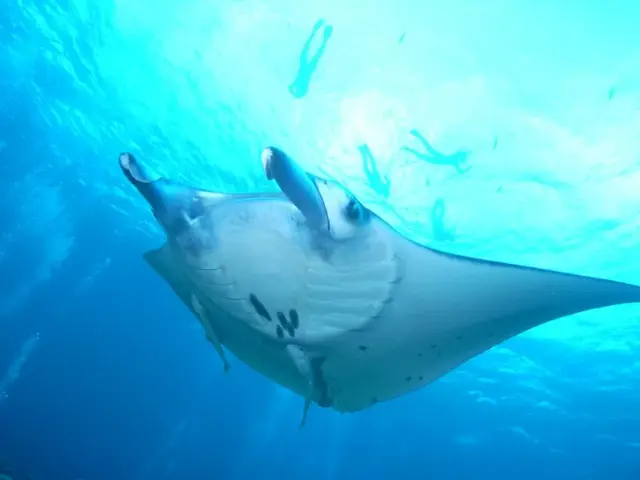
Panari Big Corner is,Aragusuku Island (Panari Island)The spot is located south of the
Depths vary from 10 to 20 meters, and in addition to manta rays, large migratory fish such as tuna can be seen.
Be aware that the tides are faster in winter.
Average depth: 15 to 20 meters
Current: Moderate to strong
Kuroshima V-drop
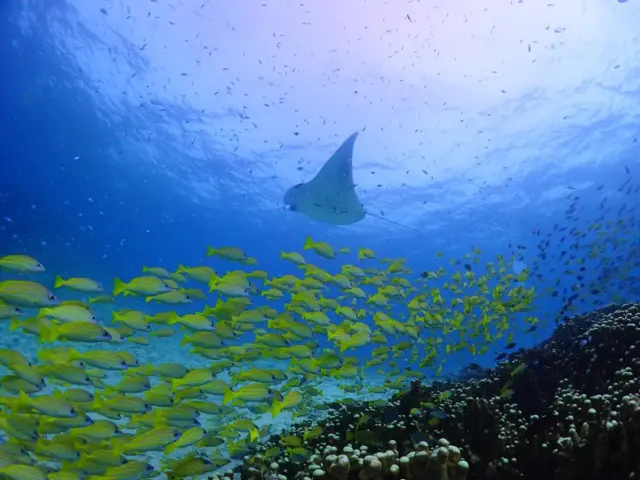
The V-shaped drop at Kuroshima is a popular point for divers.Topography of V-shaped depression in the seafloorThe area is also home to manta rays, as well as big fish such as rock cod and napoleon fish.
It is recommended for intermediate and advanced divers as it is a bit deep. You can enjoy the dynamic topography and large marine creatures at the same time.
Average depth: 15-25m
Current: Slow to moderate
Recommended for beginners
2 Manta Tours in Ishigaki Island
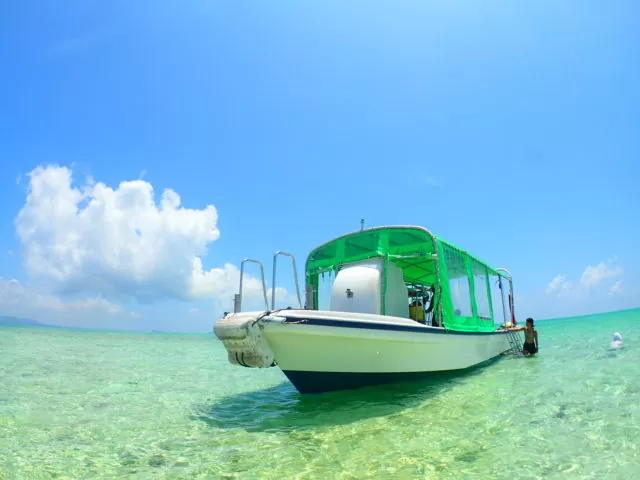
Here are some recommended tours of manta ray diving and snorkeling held in Ishigaki Island for beginners!
High probability of encounter!
See the list of Ishigaki Island Manta Tour
No license required! 2 Dives in half a day
Experience Diving Manta Tour
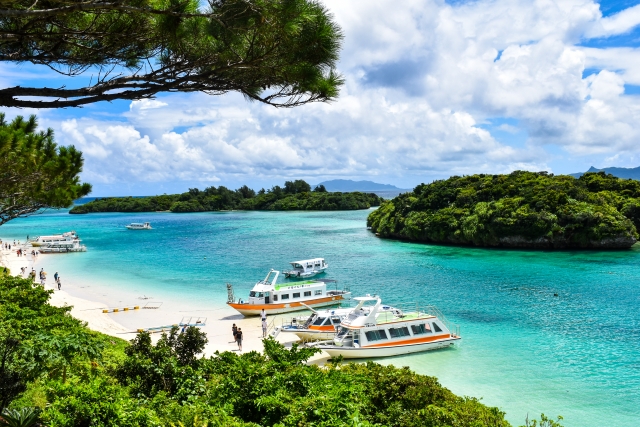
This is a 2-dive experience diving course held around Kabira Bay, where you can enjoy coral reefs and manta points in half a day.
The small group size allows plenty of time for practice. This is a very satisfying tour recommended for beginners.
This half-day tour is available in the morning or afternoon, making it easy to incorporate into your schedule.
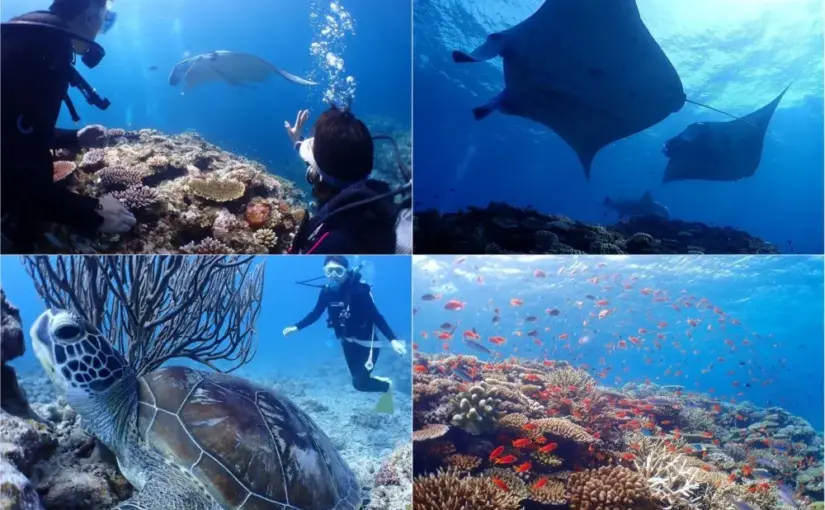 Ishigaki Island/Kabira/4 hours] 2 luxurious dives in half a day☆Guides to popular colorful coral reefs and manta points! Small Group Experience Diving Tour (No.503)開始時間8:15-12:30 / 12:30-16:40所要時間Approx. 4 hours19,800 yen
Ishigaki Island/Kabira/4 hours] 2 luxurious dives in half a day☆Guides to popular colorful coral reefs and manta points! Small Group Experience Diving Tour (No.503)開始時間8:15-12:30 / 12:30-16:40所要時間Approx. 4 hours19,800 yenClick here for a full day plan with plenty of time to dive.
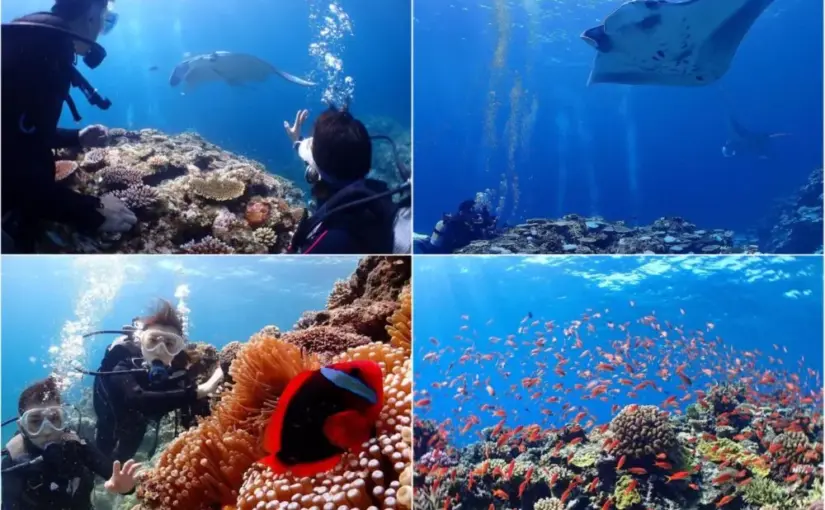 Ishigaki Island/Kawahira/one day】Dive in Kawahira with 2 dives of Manta Ray Experience Diving☆A small group of divers enjoy full day diving, so beginners can feel at ease (No.505)開始時間8:00-16:00所要時間Approx. 5.5 to 7 hours25,000 yen
Ishigaki Island/Kawahira/one day】Dive in Kawahira with 2 dives of Manta Ray Experience Diving☆A small group of divers enjoy full day diving, so beginners can feel at ease (No.505)開始時間8:00-16:00所要時間Approx. 5.5 to 7 hours25,000 yen
Sea Turtle or Manta Ray Snorkeling &
Phantom Island" Experience Diving Tour
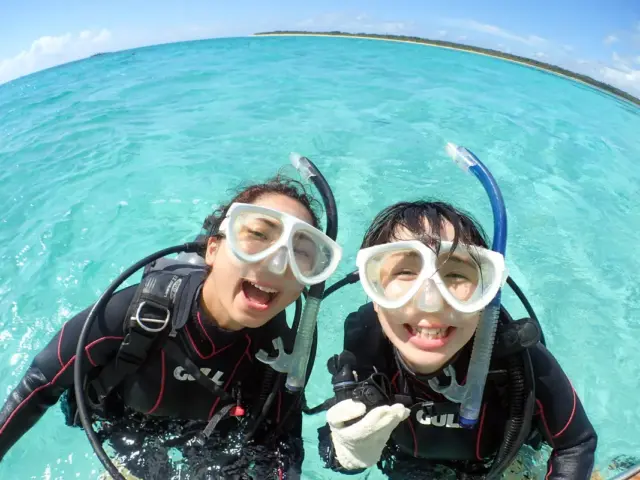
A variety of popular activities! Beginners' guide will give you a lecture.
You can look for sea turtles and manta rays by snorkeling, enjoy the spectacular "phantom islands" that can only be landed on by joining a tour, and dive deeper into the ocean world by diving....
This is a tour to fully enjoy the ocean and beaches of Ishigaki Island.
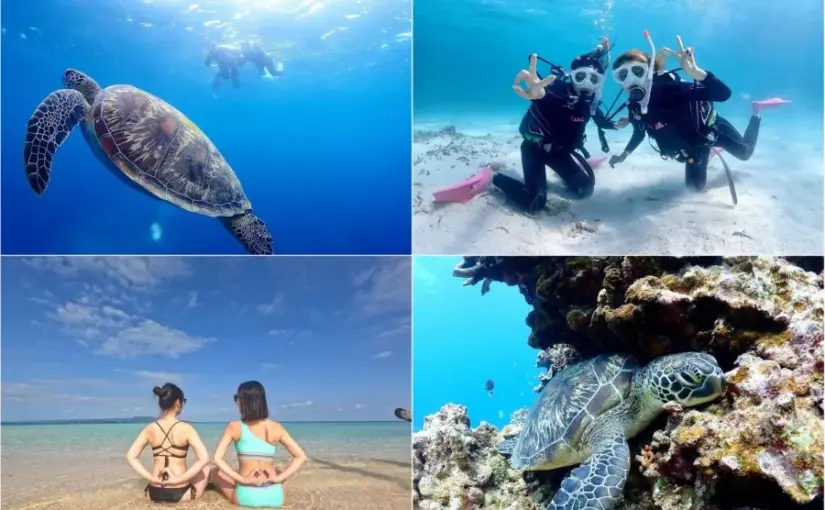 Ishigaki Island/1 day] Encounter rate is more than 90%! Manta Ray or Sea Turtle Snorkeling & Phantom Island Landing & Experience Diving Tour☆Beginners are welcome Small group for your safety♪ (No.525)開始時間9:00-16:00所要時間Approx. 7 hours17,000 yen →directional marker or indicator15,000suffix for names of swords, armour, musical instruments, etc.
Ishigaki Island/1 day] Encounter rate is more than 90%! Manta Ray or Sea Turtle Snorkeling & Phantom Island Landing & Experience Diving Tour☆Beginners are welcome Small group for your safety♪ (No.525)開始時間9:00-16:00所要時間Approx. 7 hours17,000 yen →directional marker or indicator15,000suffix for names of swords, armour, musical instruments, etc. High probability of encounter!
See the list of Ishigaki Island Manta Tour
Notes on Manta Diving Experience
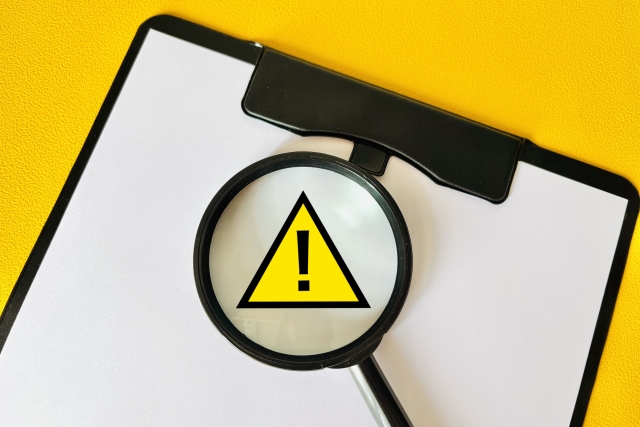
Ishigaki Island is said to be a manta paradise, but here are some things you should know before joining a tour.
Because they are living creatures, it is not always possible to meet 100%
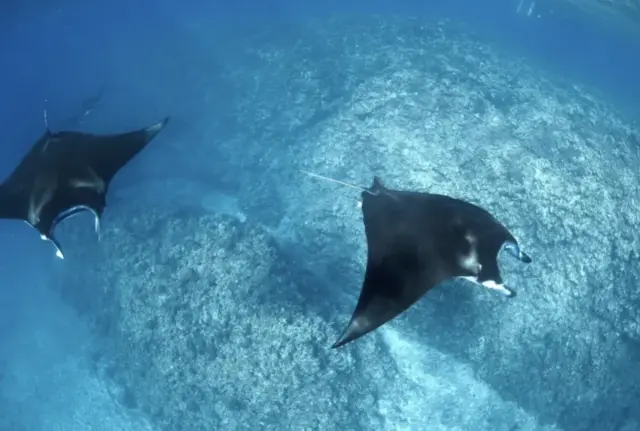
Ishigaki Island is known for its high probability of encountering manta rays, but since they are natural creatures, you may not always be able to see them.
There are days when manta rays do not appear due to weather, tides, and ocean clarity. Beginners in particular should not assume that they will be able to see manta rays, but rather enjoy the charm of the ocean itself!
Boat may not be available depending on weather conditions.
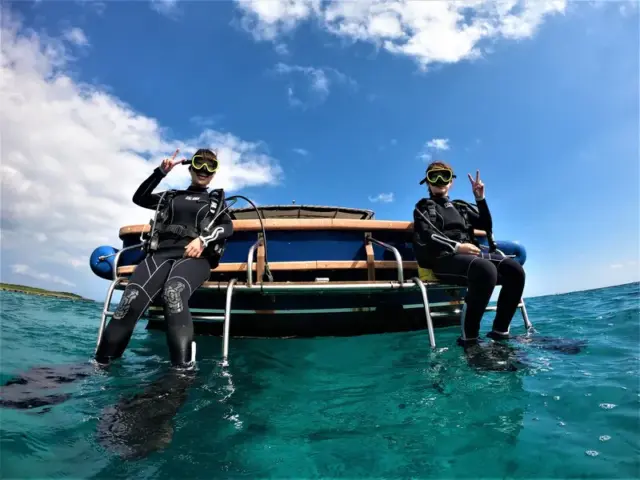
The weather in Ishigaki Island is changeable. Especially in winter, the northerly winds affect the ferry service to the remote islands frequently.
In addition, typhoons may occur in succession during the typhoon season. It is recommended to accept this as one of the characteristics of Yaeyama, which is rich in nature, and consider alternatives in case of rainy weather.
Let's watch the manta rays quietly.
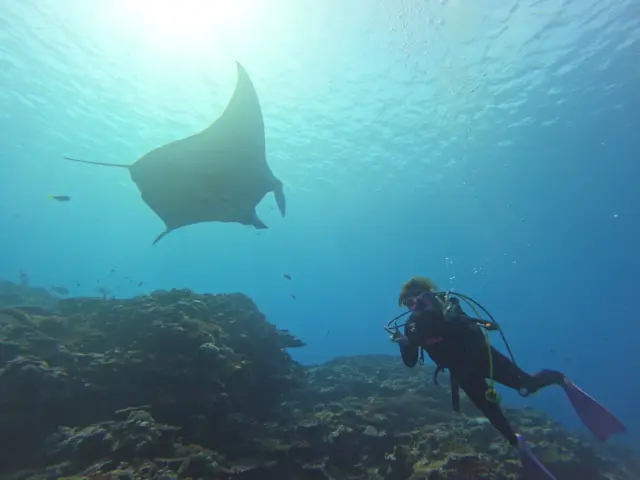
Mantas are very delicate creatures. The rule of thumb is not to do anything that will surprise or displease the manta rays.
If you do something that the manta rays do not like, it may cause them to stop visiting that point in the future.
When waiting for manta rays at the cleaning station, do not make loud noises and wait quietly.
⚪︎ not approach or chase manta rays
⚪︎ not obstruct the path of manta rays
Do not apply ⚪︎ bubbles (air)
⚪︎ Don't make loud noises.
Frequently Asked Questions Q&A
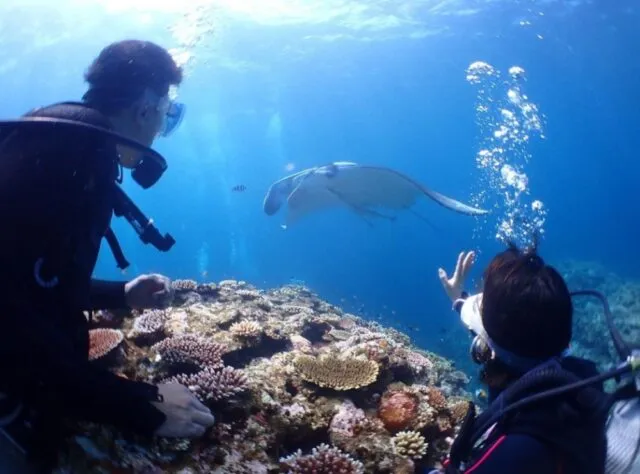
We have compiled an easy-to-understand list of questions that first-time visitors are likely to have concerns about and frequently asked questions.
Can people who can't swim or children participate?
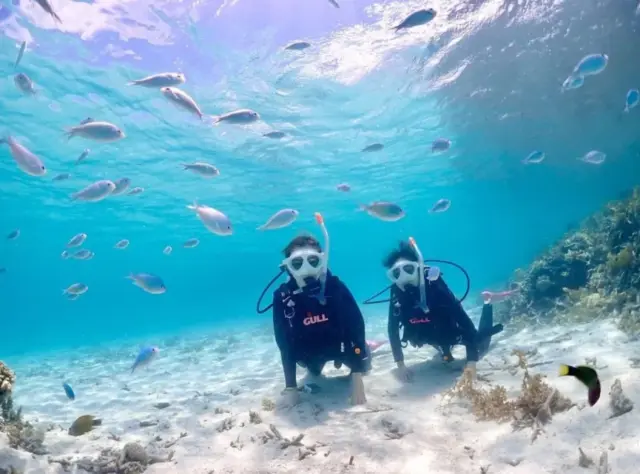
Most tours set the minimum age for participation in diving at 10 years old. Licenses can be obtained from age 12.
You don't have to be able to swim! Anyone in good health can enjoy the marine world. Many tours have no upper age limit.
How do you handle cancellations in case of typhoons or bad weather?
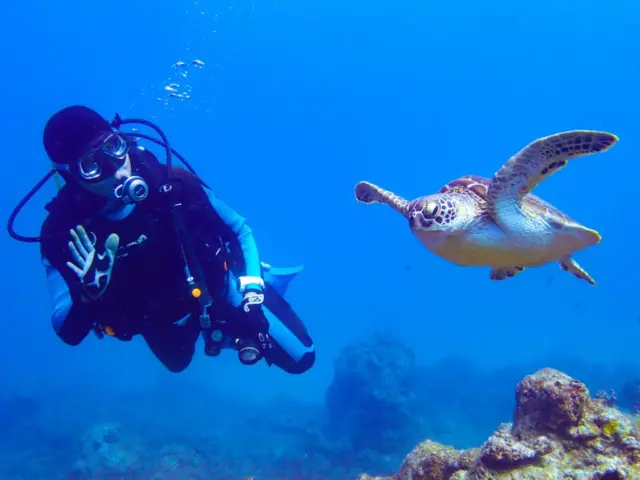
In case of bad weather, tours may be cancelled. In such cases, many tours do not charge a cancellation fee even if the tour is canceled the day before or the day of the tour, but please check the cancellation policy in advance.
During the typhoon season, it is safe to schedule a reserve day.
summary
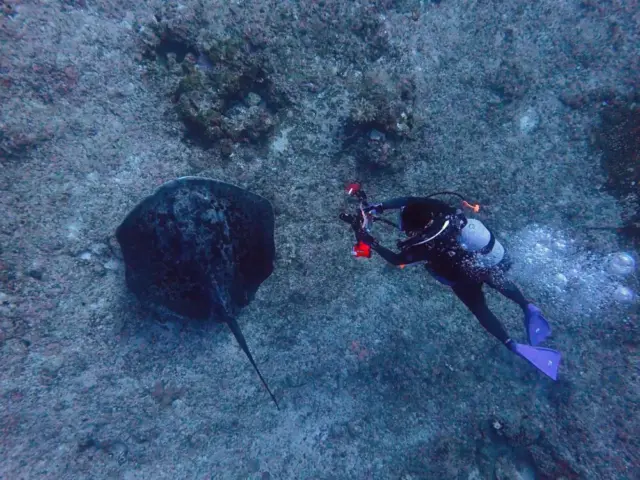
Large manta rays and sea turtles swimming freely in the ocean teach us about the rich world of the sea and the wonders of nature.
Why don't you come to Ishigaki Island for an experience of a lifetime?
Click here to read the article in conjunction with this one.
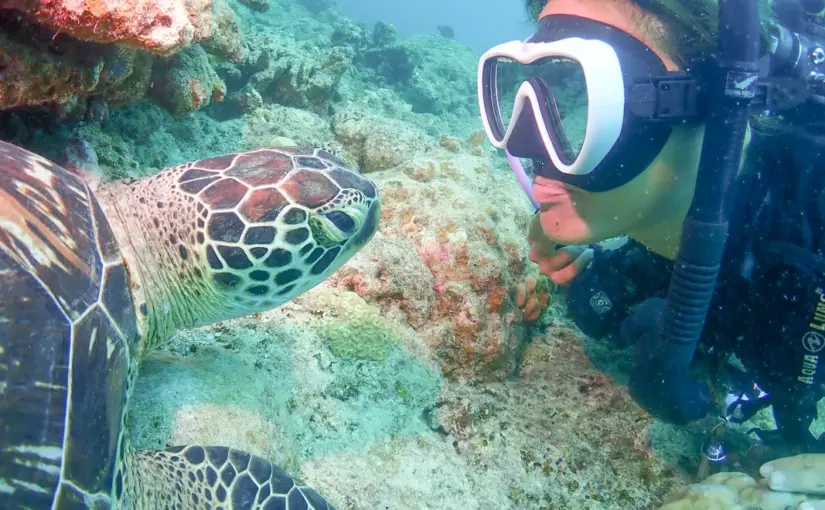 No worries even if it's your first time! Ishigaki Island Experience Diving Tour Recommendation Guide2 Reasons why Ishigaki Island is recommended for beginners 2.1 You can enjoy diving all year round due to the mild climate 2.2 Calm and clear water 2.3 There are spots where you can see manta rays and sea turtles 2.4 There are many experienced guides and a variety of tour [...].
No worries even if it's your first time! Ishigaki Island Experience Diving Tour Recommendation Guide2 Reasons why Ishigaki Island is recommended for beginners 2.1 You can enjoy diving all year round due to the mild climate 2.2 Calm and clear water 2.3 There are spots where you can see manta rays and sea turtles 2.4 There are many experienced guides and a variety of tour [...].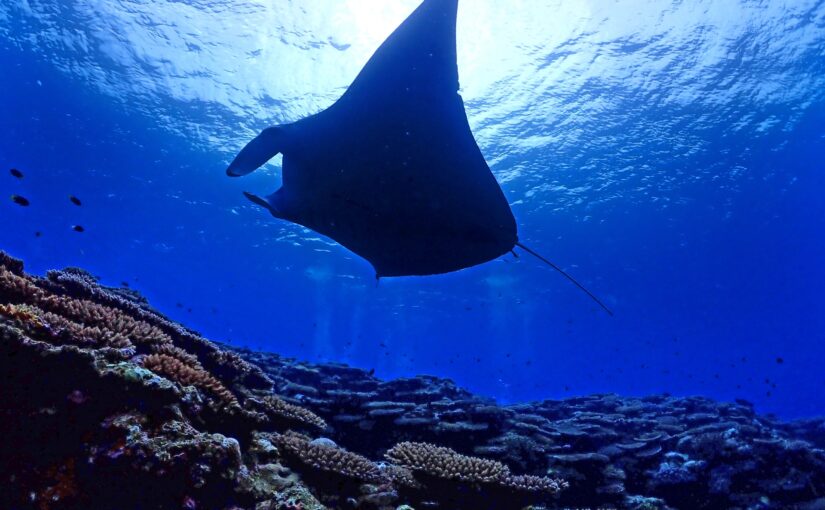 A complete guide to popular fun diving in Ishigaki Island! Also introduces small group tours for beginners and solo travelers!Contents1 Fun Diving in Ishigaki Island2 Attractions of Diving in Ishigaki Island2.1 Clearness of the water and various diving spots in Japan2.2 Sea where you can meet manta rays and sea turtles with high probability2.3 Beginners and blank divers can also enjoy diving in [...]
A complete guide to popular fun diving in Ishigaki Island! Also introduces small group tours for beginners and solo travelers!Contents1 Fun Diving in Ishigaki Island2 Attractions of Diving in Ishigaki Island2.1 Clearness of the water and various diving spots in Japan2.2 Sea where you can meet manta rays and sea turtles with high probability2.3 Beginners and blank divers can also enjoy diving in [...]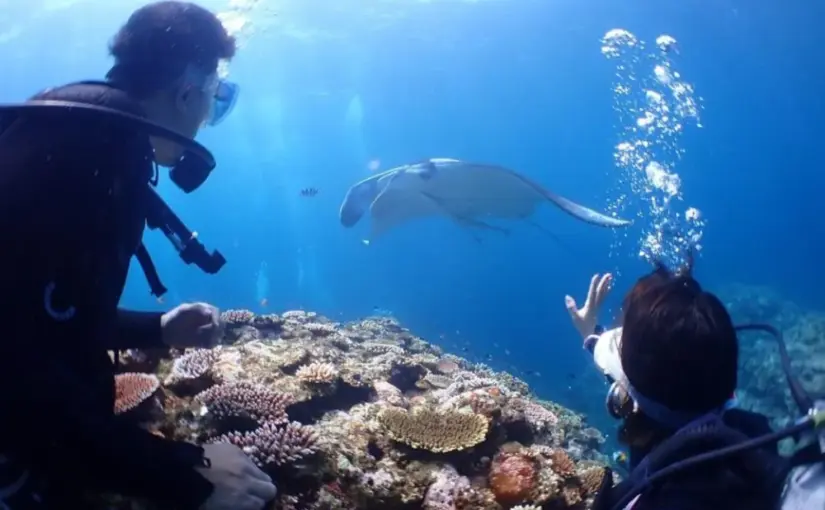 Meet manta rays and sea turtles! Complete guide to popular diving spots in Ishigaki Island recommended for beginners!Contents1 Ishigaki Island is a diving paradise! 2.1 Calm and clear waters 2.2 Many spots to see manta rays and sea turtles 2.3 Various tours are available 2.4 Warm climate and a [...]
Meet manta rays and sea turtles! Complete guide to popular diving spots in Ishigaki Island recommended for beginners!Contents1 Ishigaki Island is a diving paradise! 2.1 Calm and clear waters 2.2 Many spots to see manta rays and sea turtles 2.3 Various tours are available 2.4 Warm climate and a [...]
